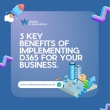You’ve probably heard of Dynamics 365 and Power Platform, but do you know how they differ? These two Microsoft offerings serve distinct purposes, yet they’re often mentioned in the same breath. Understanding their key differences is essential for making informed decisions about your business’s technology stack. Whether you’re looking to streamline operations, enhance customer relationships, or build custom applications, the choice between Dynamics 365 and Power Platform can greatly impact your organization’s efficiency and growth. Let’s explore how these platforms compare and which might be the best fit for your unique needs.
Core Functionalities and Purpose
Two distinct Microsoft offerings, Dynamics 365 and Power Platform, serve different core functionalities and purposes. Dynamics 365 is a detailed suite of ERP and CRM applications designed to manage various business operations, including sales, customer service, and finance. It provides pre-built solutions tailored for specific business processes, targeting enterprise-level businesses with complex operational needs.
Dynamics 365 utilizes the Common Data Service for data management, enabling seamless integration and data sharing across its applications. Additionally, it enhances operational efficiency by providing real-time insights, which is vital for informed decision-making and driving growth in large organizations, as highlighted in ERP systems benefits.
On the other hand, Power Platform encompasses a broader set of tools, including Power Apps, Power BI, and Power Automate, for app development, data analysis, and workflow automation. It allows users to create custom applications and automate business processes without extensive coding knowledge.
Power Platform leverages Azure Cloud Services for hosting custom applications and solutions. While both platforms integrate with Power BI for data visualization, Dynamics 365 offers built-in analytics features directly within its applications, enhancing reporting capabilities for enterprise users.
Power Apps, a component of Power Platform, focuses on enabling users to develop low-code applications quickly, making it more accessible for businesses of various sizes.
Application Development Approaches
Dynamics 365 and Power Platform offer distinct approaches to application development, catering to different business needs and user capabilities. Dynamics 365 provides pre-built applications tailored to specific business processes like Sales, Marketing, and Customer Service. These solutions allow organizations to implement thorough systems quickly without extensive custom development. The focus is on configuration and customization within the enterprise-grade framework, typically involving a more structured development lifecycle.
Additionally, software implementation solutions can enhance the effectiveness of these applications, ensuring they’re optimized for global business management challenges.
In contrast, Power Apps adopts a low-code development approach. You’ll find that creating custom applications is more accessible with its drag-and-drop interface, greatly reducing the need for traditional coding skills. Power Apps supports two main types: Canvas Apps for flexible design and Model-Driven Apps for complex, data-driven scenarios. This platform promotes rapid prototyping and iterative development, making it ideal for smaller projects or departmental needs.
Both solutions prioritize integration with other Microsoft products. Dynamics 365 leverages a shared data model within the Common Data Service, enhancing business intelligence and reporting capabilities. Power Apps, while more flexible, also integrates seamlessly with Microsoft’s ecosystem.
The choice between these platforms ultimately depends on your organization’s specific requirements, development resources, and desired level of customization.
Data Management and Integration
Both platforms offer robust solutions for data management and integration, but their approaches differ markedly. Dynamics 365 utilizes the Common Data Service (CDS) to centralize and manage large volumes of customer data across its ERP and CRM applications. This guarantees consistency and data integrity throughout the enterprise.
Additionally, data-driven insights are essential for effective decision-making, and both platforms excel in providing meaningful analysis from the data they manage. On the other hand, Power Platform relies on Azure Cloud services for data management, allowing users to create custom applications that integrate with various data sources.
Dynamics 365’s integration capabilities enable seamless connectivity with other Microsoft products, enhancing its data management features and allowing for real-time updates across applications.
Power Platform, specifically Power Apps, facilitates data integration through connectors, enabling users to link their custom applications to multiple data sources without extensive coding.
While both platforms support data sharing and collaboration, Dynamics 365 is designed for thorough enterprise-level data management. Power Platform, however, focuses on enabling users to create tailored applications that leverage existing data.
This distinction highlights the complementary nature of these platforms, with Dynamics 365 providing a robust foundation for enterprise data management and Power Platform offering flexibility for custom application development and integration.
Scalability and Customization Options
When it comes to scalability and customization, these platforms take different approaches to meet varying business needs. Dynamics 365 offers extensive ERP and CRM solutions that can scale to accommodate large enterprises with complex operational needs. It focuses on delivering pre-built modules that can be tailored but may require more time for implementation.
As your business grows, you can add or remove modules based on changing requirements, ensuring flexibility in your software solutions.
On the other hand, Power Apps provides a low-code platform that allows you to quickly develop and customize business applications. This approach enables rapid prototyping and iterative changes, catering to both small and medium-sized businesses.
You’ll find it easier to create and modify applications dynamically as your needs evolve.
Both platforms support integration with Microsoft services, ensuring seamless expansion of functionality and data access as your business grows.
While Dynamics 365’s Common Data Service supports large volumes of customer data with a standardized data model, Power Apps utilizes Azure Cloud Services to enhance customization and scalability across various data sources.
This flexibility allows you to adapt your business applications efficiently, regardless of your organization’s size or complexity.
User Experience and Accessibility
Your experience with business software can make or break productivity, which is why user experience and accessibility are essential factors when comparing Dynamics 365 and Power Platform.
Dynamics 365 offers a thorough interface tailored to specific ERP and CRM functions, providing a cohesive experience across various modules. It emphasizes role-based access, ensuring users have tailored experiences based on their specific roles.
In contrast, Power Apps utilizes a low-code, drag-and-drop interface, allowing quick design and deployment of custom applications without extensive programming knowledge.
Both platforms support mobile access, but Dynamics 365’s mobile experience focuses more on CRM and ERP functions. Power Apps offers greater flexibility for creating custom mobile solutions.
The integration of Power BI enhances data visualization and reporting capabilities in both platforms, making insights more accessible.
While Dynamics 365 provides a structured approach to user experience, Power Apps allows for more flexible app sharing and collaboration tailored to project needs.
This difference in approach means you’ll need to evaluate your organization’s specific requirements and user base when choosing between the two platforms for ideal user experience and accessibility.
Pricing and Licensing Models
Understanding the pricing and licensing models of Dynamics 365 and Power Platform is vital for making an informed decision. Dynamics 365’s subscription-based model offers various modules, potentially leading to complex pricing structures depending on your chosen applications.
In contrast, Power Apps provides a more straightforward tiered pricing system, allowing you to select plans based on app usage and features. This simplifies cost estimation for your business.
When it comes to licensing, Dynamics 365 offers flexibility with options for individual applications or bundled packages tailored to your organization’s needs. Power Apps licenses, however, typically focus on user or app access.
It’s imperative to take into account that both platforms may incur additional costs for premium features, integrations, or higher usage tiers. To avoid the “error: Value can’t be determined” scenario in your budget planning, carefully evaluate the total cost of ownership for each solution.
You’ll find flexible subscription options for both Dynamics 365 and Power Apps, allowing you to adjust your plans as your business requirements evolve.























